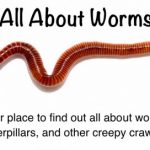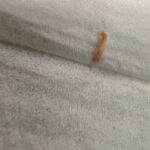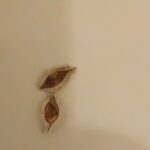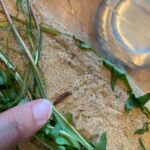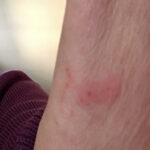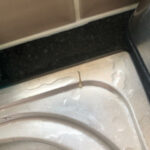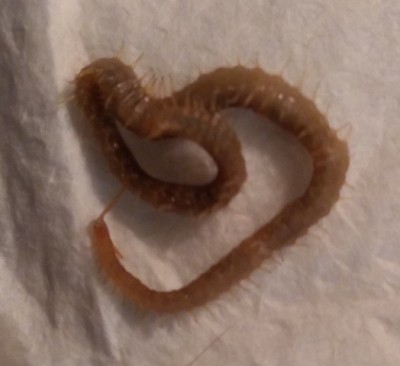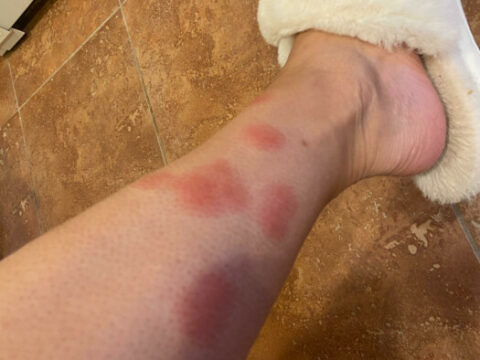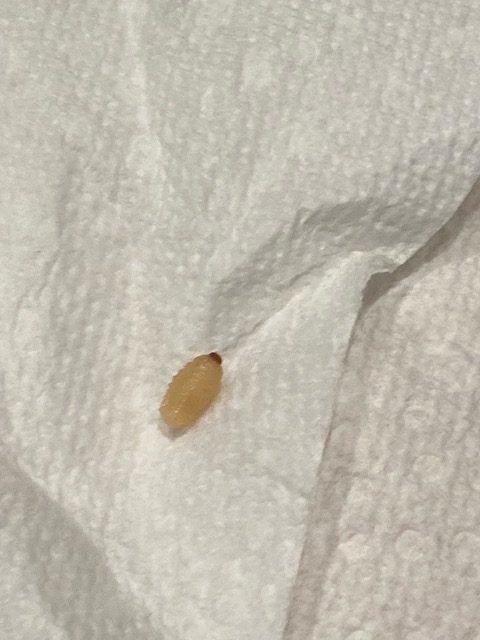
“I have found four of these now on my kitchen countertop, near my kitchen sink”, reports this reader about the white creature with a brown head pictured below. “I’m totally freaked out by what these are and why they’re in my kitchen! Please help!”
“There is a window above my sink”, she continues. “I recently have had yellow jackets (hornets/bees) up under the siding of my house just under this window. I’m unsure if that’s related. I’m just trying to give you as much information as possible.”
Now, it is stories like these that really emphasize how important context is. We think that these are indeed yellow jacket larvae, but if it was not for the fact that our reader mentioned that she already had yellow jackets outside her kitchen, we would not have guessed that in a million years. At first, we saw a white larva with a brown head (which is about as generic as you can get for a larva’s appearance) that was found in a kitchen and thought ‘oh, it’s a pantry moth larva!’, but once we took a second look at what yellow jacket/wasp larvae actually look like, we found a perfect match.
This situation is quite special, as it involves wasps. Although our reader did not mention that there was a nest nearby, it sounds like there might be, especially if the larvae are crawling through our reader’s kitchen window. Wasp nests are very dangerous to deal with, so in this situation we implore our reader to consult a professional to check for and potentially eliminate the nest, as it is not something she should try to do herself.
When it comes to the larvae, we recommend that she move them outside, and do so very carefully. We absolutely do not recommend killing them. Even though we are not sure if killing wasp larvae will emit the same chemical that adult wasps do when they die (thus warning the rest of the wasps in the nest of the attacker), we do not think our reader should risk it.
To conclude, the white worm-like creatures our reader found in her kitchen are most likely wasp larvae, and we urge caution. As we said, we think the safest option is for her to contact a professional who can look for and get rid of a nest, should there be one nearby. And if she does contact a professional, she should give them all the same information, photos and video. We hope this article proves helpful and we wish our reader the very best.
All About Worms is always free, always reader-supported. Your tips via CashApp, Venmo, or Paypal are appreciated! Receipts will come from ISIPP Publishing.
You might also find these guys interesting!






